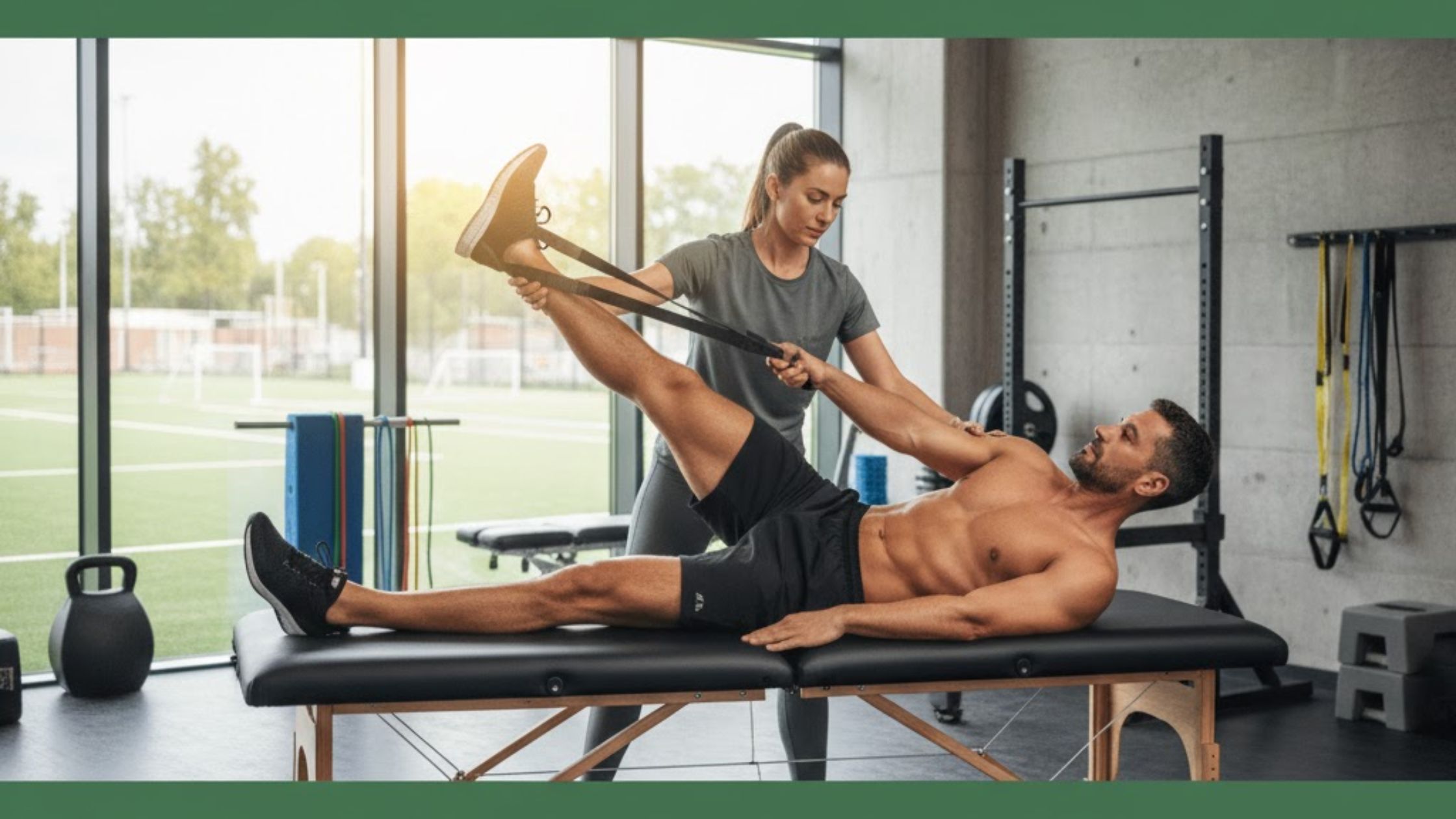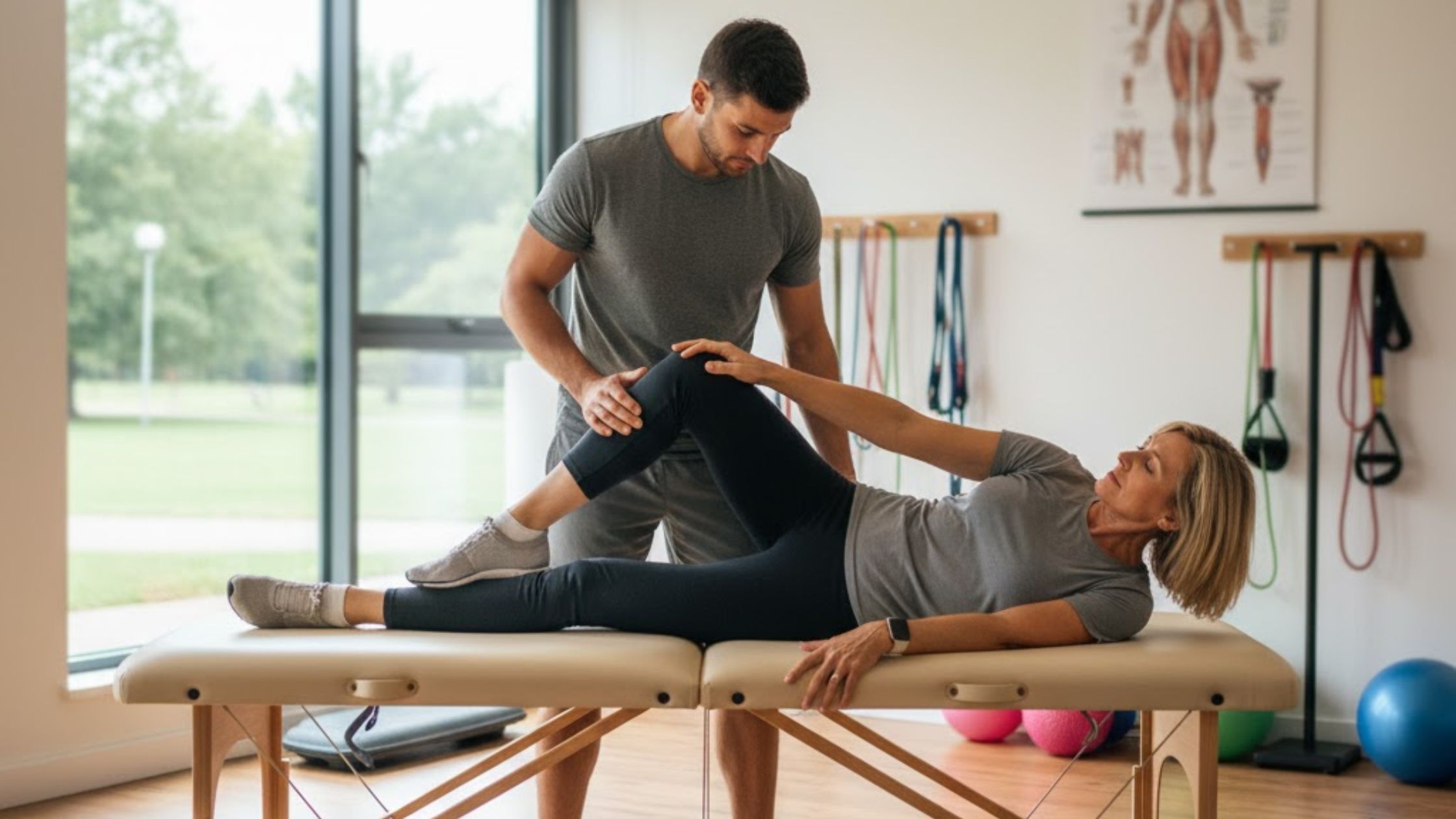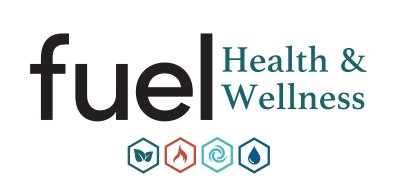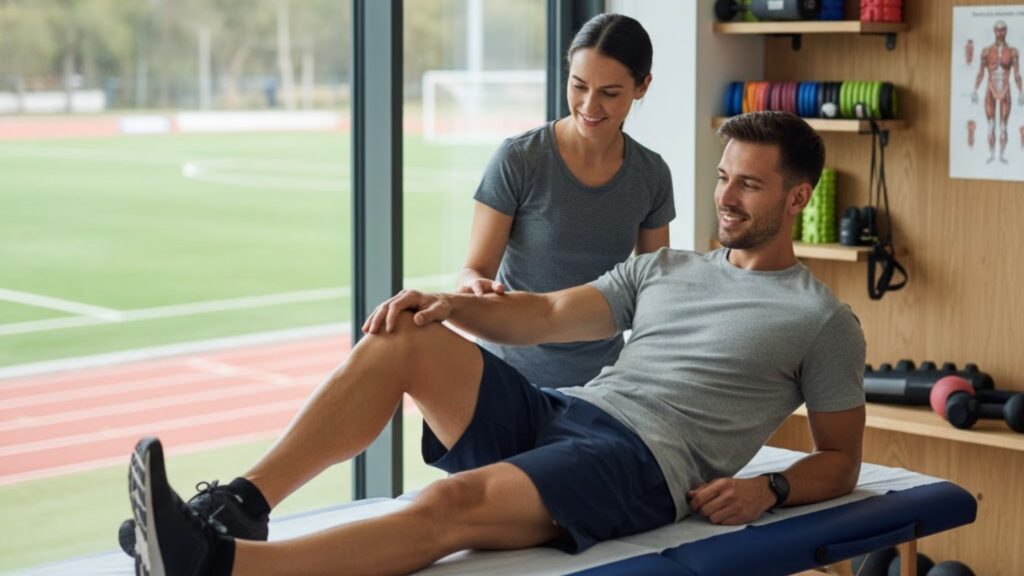Recovering from a sports injury can often feel like a frustrating game of patience, demanding more than just rest and time. It requires a strategic, multi-faceted approach aimed at not only healing the damaged tissue but also restoring the body’s intrinsic ability to move fluidly and powerfully. For athletes and active individuals, simply returning to the starting line is not the goal; the objective is to return stronger and more resilient than before. This is where professional Assisted Stretch Therapy shines as a critical, non-negotiable component of a modern rehabilitation program. By utilizing specialized techniques under the guidance of a certified therapist, this modality accelerates healing, optimizes functional movement, and lays the groundwork for peak future performance, moving beyond the limitations of self-stretching routines to target depth and precision in ways the body often cannot achieve alone.
The process of healing involves mitigating inflammation, repairing microscopic tears, and addressing the subsequent tightening of muscles and connective tissues that naturally occurs after trauma. Without intervention, this residual stiffness can lead to impaired biomechanics, creating a cycle of compensatory movement and re-injury. Assisted stretching acts as a catalyst, skillfully guiding the body through precise ranges of motion that re-educate the nervous system and lengthen tightened structures. This therapeutic engagement ensures that recovery is not just a return to baseline, but a true physical upgrade, making it an essential service provided by centers like Fuel Health & Wellness.
What are the benefits of assisted stretch therapy for sports injury recovery?

The integration of Assisted Stretch Therapy into a personalized rehabilitation plan delivers a wealth of benefits that directly address the core challenges of post-injury recovery.
It is a powerful form of post-injury rehabilitation stretching that significantly expedites the journey back to full health and athletic participation. The primary advantage lies in the deep, controlled stretches facilitated by a professional, allowing for therapeutic angles and depths that self-stretching simply cannot safely achieve. This specialized attention helps to normalize tissue tension around the injured area, which is vital for pain reduction and mobility restoration.
One of the immediate benefits is a marked improvement in Range of Motion (ROM). When a joint or muscle is injured, the body’s natural defense mechanism is to tighten up, restricting movement to prevent further damage. While helpful initially, this restriction quickly leads to stiffness and adhesion formation within the connective tissue and muscle fibers.
A trained stretch therapist can safely and incrementally coax the affected area through its full potential ROM. This careful expansion prevents the joint capsule and surrounding ligaments from becoming prematurely restricted, which is a major hurdle in many physical therapy programs. The therapist’s skilled control bypasses the natural tendency to guard the movement, promoting relaxation and effective elongation.
Furthermore, this modality is instrumental in accelerating recovery by enhancing localized circulation. Improved blood flow to the injured site is crucial because it ensures the rapid delivery of oxygen and vital nutrients necessary for cellular repair and regeneration. Simultaneously, increased circulation helps flush out metabolic waste products and inflammatory agents, such as lactic acid and other byproducts that contribute to lingering soreness and pain.
The reduction of muscle tension is another cornerstone of assisted stretching benefits. Chronic muscle tightness is often a compensatory response to injury or poor biomechanics. By employing techniques like Proprioceptive Neuromuscular Facilitation (PNF), the therapist can tap into the nervous system’s reflexes, effectively “tricking” the muscle into relaxing beyond its typical resting length. This deep relaxation aids in long-term muscular health and minimizes the likelihood of future strain or tears in adjacent, overworked muscle groups.
Finally, the sheer act of receiving passive, therapeutic bodywork offers profound psychological benefits. Athletes, particularly those facing prolonged downtime, can experience stress and anxiety related to their performance loss. A session of assisted stretching engages the parasympathetic nervous system, promoting a state of deep rest and relaxation that reduces overall stress and tension, contributing to a more holistic recovery environment.
The Fundamental Science of Mobility and Injury
To appreciate the profound impact of this therapy, one must understand the anatomy and physiology underlying movement and trauma. An injury is never just a single event; it triggers a cascade of biological responses that affect muscle, fascia, and the intricate neural feedback loop that governs flexibility.
Understanding Connective Tissue (Fascia, Tendons)
The human body is an intricate web of muscles, bones, and the enveloping material known as connective tissue. This tissue, which includes tendons, ligaments, and fascia, provides structure, support, and protection. Fascia, in particular, is a continuous sheath that runs throughout the body, surrounding muscles, groups of muscles, blood vessels, and nerves.
When a sports injury occurs—a muscle strain, ligament sprain, or contusion—the body initiates an inflammatory response. While necessary for healing, this process often leads to the thickening and tightening of the surrounding fascial layers. This scar tissue formation, or adhesion, restricts the muscle’s ability to slide and glide efficiently against neighboring structures.
Assisted stretching techniques, especially those focused on myofascial release, work to break down these adhesions. The professional guidance allows for three-dimensional stretching of the fascial planes, ensuring the muscle unit and its surroundings gain flexibility rather than just the muscle belly itself. This focus on fascial integrity is what separates therapeutic assisted stretching from standard, isolated static stretching, offering truly comprehensive mobility gains.
Tendon recovery is also significantly influenced by controlled loading and movement. While tendons should not be aggressively stretched, the gentle, controlled movements characteristic of recovery mobility therapy help maintain the viscoelastic properties of the musculotendinous unit. This prevents the tendon from becoming rigid and brittle, a common vulnerability that can lead to re-injury during the transition back to high-load activity.
The Neuromuscular Component (Stretch Reflex, Proprioceptors)
Flexibility is not just a function of muscle length; it is highly dependent on the central and peripheral nervous system. Muscles contain specialized sensory receptors called proprioceptors, which constantly monitor muscle length and tension. Two key proprioceptors are the muscle spindle and the Golgi Tendon Organ (GTO).
When a muscle is stretched too quickly or too far, the muscle spindle triggers the protective myotatic reflex, causing the muscle to contract and resist the stretch. This is why self-stretching often feels restricted; the body is trying to protect itself.
Assisted stretch therapy, particularly PNF techniques, expertly leverages the GTO. The GTO is located in the tendon and senses muscle tension. By having the client gently contract the muscle against the therapist’s resistance (the “hold” phase), the GTO is stimulated, signaling the muscle to immediately relax more deeply upon the subsequent passive stretch. This mechanism allows the therapist to safely reach new end-ranges of motion that were previously limited by the protective reflex. If you want to learn more about this mechanism, explore PNF Stretching vs. Traditional Assisted Stretch Therapy.
This ability to override the protective stretch reflex is what makes assisted stretching such a powerful tool in physical therapy stretch protocols. It systematically desensitizes the nervous system to new ranges of movement, translating into long-term functional flexibility rather than just temporary elongation. The subtle communication between therapist and client ensures that this deep work remains safe, pushing boundaries without causing pain or triggering tissue damage.
Assisted Stretch Therapy in the Acute and Sub-Acute Recovery Phases

Injury rehabilitation is typically compartmentalized into distinct phases, and the application of assisted stretching must be carefully tailored to each one. Improper timing or intensity can easily turn a beneficial treatment into a detrimental one.
Phase 1: Immediate Post-Injury (The R.I.C.E.R. Protocol)
The initial 48 to 72 hours following an acute soft tissue injury is the inflammatory phase. During this time, the body is focusing on halting bleeding, cleaning up damaged cells, and initiating the repair process.
In this early phase, the traditional R.I.C.E.R. regimen—Rest, Ice, Compression, Elevation, and Referral—is paramount. It is crucial to note that stretching is strictly contraindicated during this immediate period. Applying force to acutely torn or damaged fibers will only worsen the injury, increase bleeding, and exacerbate inflammation, prolonging the overall healing time.
Assisted stretch therapy’s role here is mostly consultative and preparatory. A skilled therapist at Fuel Health & Wellness would assess the non-injured areas, such as the opposing limb or the rest of the kinetic chain, to maintain their optimal function and flexibility while the injury site rests. This proactive approach prevents secondary problems, such as tightness in the healthy limb due to compensation and disuse.
Phase 2: Gentle Introduction of Movement (Passive and Gravity-Assisted)
Once the acute inflammatory stage has passed (typically 3-7 days post-injury), the sub-acute phase begins, characterized by controlled, gentle movements. This is the moment when assisted stretching becomes incredibly beneficial.
The goal is to prevent the formation of excessive scar tissue and ensure the newly forming tissue aligns correctly along the lines of stress. This is often achieved through gentle, passive stretching where the therapist, using gravity and minimal force, moves the affected joint just to the point of a comfortable stretch, holding the position for a short duration.
This controlled input is far safer than self-initiated movement because the therapist can precisely control the force, direction, and speed of the stretch, ensuring the joint and surrounding ligaments are fully supported. The therapist monitors the client’s non-verbal cues and muscle guarding, ensuring the movement does not cross the threshold of pain. This gentle, focused work helps gradually restore circulation and begins to signal the nervous system that movement in the area is safe again.
In this phase, the application of Active Isolated Stretching (AIS) techniques can also be introduced, focusing on rhythmic, short-hold stretches. These repeated movements help pump fresh blood into the healing tissues without over-stressing the injured site, providing a light internal massage that facilitates tissue alignment and repair. This is a critical bridge between complete rest and active rehabilitation exercises.
Specialized Assisted Techniques for Deeper Rehabilitation
The umbrella term “Assisted Stretch Therapy” encompasses several advanced modalities, each with a specific mechanism of action designed to target different physiological structures—muscles, tendons, fascia, and nerves. These specialized approaches are the true powerhouse behind deep, lasting flexibility and injury resolution.
Proprioceptive Neuromuscular Facilitation (PNF) – Mechanism and Application
PNF is arguably the most scientifically respected and effective form of assisted stretching used in clinical settings. Developed initially for patients with paralysis, it utilizes the inherent feedback mechanisms of the nervous system to achieve maximal muscle relaxation.
The “Contract-Relax” method is the most common PNF protocol. The therapist moves the limb to the point of resistance, and then the client is instructed to contract the target muscle (the one being stretched) for several seconds against the therapist’s immovable resistance. This isometric contraction strongly stimulates the Golgi Tendon Organ (GTO).
When the client then relaxes, the GTO sends a powerful inhibitory signal to the muscle spindles, causing a sudden, deep relaxation of the target muscle. This allows the therapist to safely and effectively push the limb further into a new, deeper range of motion. PNF is highly effective for chronic tightness, muscle imbalances, and specific functional limitations often encountered in recovery from hamstring strains, hip flexor issues, or shoulder impingement.
Active Isolated Stretching (AIS) – The Pumping Mechanism
AIS differs from PNF in its active component and the duration of the stretch hold. The client actively contracts the opposing (antagonist) muscle to stretch the target (agonist) muscle, with the therapist providing gentle assistance at the end range.
The key feature of AIS is the short holding time, typically only 1 to 2 seconds, repeated 8 to 10 times. This brief hold prevents the engagement of the protective stretch reflex and, more importantly, facilitates a pumping action. This rhythmic contraction and release helps to circulate blood and lymphatic fluid through the muscle tissue, accelerating the removal of metabolic byproducts and bringing in fresh nutrients.
In the context of recovery, AIS is particularly valuable in the later stages of rehabilitation to increase the active range of motion—the range a person can move on their own. This active engagement helps retrain the gait mechanics and functional movement patterns that may have been lost or altered due to injury, ensuring mobility is both achieved and maintained actively by the body itself. If you are struggling with pain when you try to move, you might find relief by exploring Safe Stretching Options for People with Chronic Pain.
Fascial Stretch Therapy (FST) – Targeting the Sheaths
FST is a unique, traction-based form of assisted stretching that focuses on the fascia and joint capsules rather than just the muscle belly. This technique is typically performed on a massage table with stabilizing straps to hold limbs securely.
The therapist uses gentle oscillation, rhythmic movements, and smooth traction to decompress the joints before moving into multi-planar stretches. By utilizing traction, the therapist can create space in the joint capsule, making the stretching of surrounding tissues more effective and less restricted.
FST aims to stretch entire lines of fascia—a concept known as “stretching the body from the core out.” This holistic approach recognizes that tightness in the foot’s fascia (plantar fascia) can be connected to tightness in the hamstring, hip, and even the shoulder. By addressing the entire fascial line, FST provides a more comprehensive and enduring resolution to movement restrictions and pain. Its focus on recovery mobility therapy makes it a favorite among professional athletes.
| Stretching Technique | Primary Mechanism | Target Structure | Application in Recovery | Key Benefit |
| Proprioceptive Neuromuscular Facilitation (PNF) | Neurological Inhibition (GTO) | Muscle & Tendon | Regaining significant end-range ROM after muscle strain. | Deepest, most lasting flexibility gains. |
| Active Isolated Stretching (AIS) | Antagonist Contraction & Pumping | Muscle & Blood Flow | Post-workout flushing, transitioning to active rehab. | Enhanced circulation and active ROM restoration. |
| Fascial Stretch Therapy (FST) | Joint Traction & Multi-Planar Movement | Fascia & Joint Capsule | Chronic stiffness, widespread movement restriction. | Global, holistic improvement in full-body mobility. |
The Role of Assisted Stretching in Restoring Gait and Functional Movement

True recovery means more than just having a healed injury; it means restoring the body’s entire system of movement, known as biomechanics. Assisted stretching plays a pivotal role in ensuring the body moves symmetrically, efficiently, and without compensatory patterns.
Correcting Muscle Imbalances
When one muscle group is injured or weakened, other muscle groups immediately step in to compensate. For example, a weak gluteus medius after a knee injury will cause the opposing hip flexors or hamstrings to tighten dramatically, leading to muscle imbalances. This is a functional problem that can plague an athlete long after the initial injury is deemed “healed.”
Assisted stretch therapy provides the necessary counter-force to break these compensatory patterns. By deeply lengthening the overactive, tight muscles (the compensators), the therapist allows the weakened muscle group (the stabilizers) to be more effectively engaged in subsequent strength training sessions. This targeted release is essential for establishing symmetrical strength, a prerequisite for balanced gait mechanics.
A therapist can identify and target specific muscles, such as the psoas or piriformis, which frequently become tight and cause pain referral patterns. Releasing these key tension points is often the difference between a successful return to sport and the frustrating recurrence of chronic, nagging pain. For a tailored plan to achieve peak physical balance, discover Assisted Stretching for Athletes and Active Lifestyles.
Restoring Joint Range of Motion (ROM)
Every joint in the body has a specific, optimal range of motion. Injuries, particularly those involving ligaments or cartilage (like an ACL tear or meniscus injury), drastically limit this range, sometimes permanently if not addressed aggressively yet safely.
Physical therapy stretch protocols utilize assisted stretching to systematically negotiate the boundaries of restricted movement. The therapist is trained to distinguish between a restriction caused by muscle guarding and a hard restriction caused by structural damage. This distinction is critical for patient safety.
By using techniques like sustained holds or gentle oscillations, assisted stretching works on the viscoelastic properties of the joint’s peri-articular structures—the capsule and ligaments. Over time, this controlled stress encourages the elongation of these structures, allowing the joint to glide and roll through its intended path, minimizing wear and tear and maximizing efficiency. This restoration of full ROM is crucial for dynamic, explosive movements required in sports.
Improving Movement Efficiency
In sports, efficiency is power. Every unnecessary or restricted movement wastes energy and places undue stress on the body. A tight hamstring, for example, forces the lower back and pelvis to work harder during running, leading to fatigue and potential injury elsewhere.
Assisted stretching fundamentally improves movement efficiency by reducing the internal friction and resistance within the body’s tissues. When the fascia is loose and the muscles are at their optimal resting length, less energy is required to perform a movement. The athlete’s body moves as one cohesive unit, rather than a collection of restricted, compensating parts.
This enhanced fluidity is palpable to the client and measurable in performance metrics. Greater flexibility and suppleness allow for a more forceful contraction during the “stretch-shortening cycle”—the mechanism crucial for jumping, sprinting, and throwing. The ability to achieve full extension and flexion without restriction translates directly into improved speed, agility, and overall athletic power.
Long-Term Performance and Injury Prevention
While the initial focus of the therapy is on recovery, the true value of assisted stretching lies in its preventative capacity. Consistent, professional stretching transforms an athlete’s physical potential long after the injury has healed, solidifying it as an integral part of ongoing wellness.
Beyond Recovery: Enhancing Athletic Longevity
For serious athletes, the game is not just about the current season; it’s about career longevity. Repetitive motions inherent to specialized sports, like a tennis serve or a pitcher’s throw, create highly specific muscle imbalances and tension patterns over time.
Assisted stretch therapists understand these sport-specific patterns and can create targeted protocols to address them before they lead to structural breakdown. For a runner, this might involve deep stretches of the hip flexors and calves to maintain proper stride length and minimize stress on the knees. For a swimmer, it could involve focused release of the rotator cuff and lats to preserve shoulder health. This proactive maintenance minimizes the accumulated micro-trauma that ultimately forces early retirement. If you are a runner looking for preventative care, review our guide on Injury Prevention for Runners with Stretch Therapy.
This dedicated maintenance schedule, ideally at a clinic like Fuel Health & Wellness, allows athletes to consistently train at a higher intensity with less risk of setback, effectively extending their competitive lifespan and maximizing their peak performance window.
Reducing Delayed Onset Muscle Soreness (DOMS)
Delayed Onset Muscle Soreness (DOMS) is the familiar, sometimes debilitating, pain and stiffness felt 24 to 72 hours after intense or unaccustomed exercise. While DOMS is primarily caused by microscopic muscle fiber damage and subsequent inflammation, assisted stretching significantly helps manage the symptoms.
By actively promoting circulation post-exercise, assisted stretching helps clear out the metabolic waste and inflammatory markers that accumulate during intense activity. Furthermore, by mechanically lengthening the muscle fibers, the therapy helps reduce the internal swelling and pressure that causes the sensation of soreness and stiffness.
Integrating a recovery mobility therapy session shortly after a heavy training load ensures a quicker return to muscle comfort and readiness for the next session. This reduction in downtime is paramount for competitive schedules and consistent training progression. For athletes prioritizing recuperation, finding a resource like Better Sleep Benefits of Assisted Stretch Therapy can be a game-changer for overall recovery optimization.
The Therapeutic Effect on Stress and Wellness
The benefits of assisted stretching extend far beyond the physical tissues, encompassing significant mental and emotional wellness gains. The entire experience—lying supported on a table, guided by a professional, focusing on deep breathing—is inherently calming.
As mentioned earlier, the engagement of the parasympathetic nervous system acts as a powerful antidote to chronic stress. Stress and anxiety cause the body to release cortisol and adrenaline, which often manifest as subconscious tension held in the neck, shoulders, and hips. Releasing this tension provides a powerful sense of mental and physical relief.
This holistic approach to well-being is fundamental to the philosophy of Fuel Health & Wellness. By reducing physical guarding and promoting deep relaxation, the therapy supports better sleep quality, improved concentration, and an overall enhanced sense of wellness, which are all vital, yet often overlooked, components of a complete recovery program.
Moreover, the hands-on nature of the therapy allows the therapist to observe minute changes in the client’s body mechanics, providing invaluable, real-time feedback. This partnership is crucial for managing the mental load of recovery. To fully appreciate the professional commitment to client care, take a moment to meet the team and learn about their specific certifications and expertise.
Frequently Asked Questions About Assisted Stretch Therapy
Addressing common concerns ensures the audience feels fully informed and comfortable with incorporating this powerful therapy into their routine.
1. Is assisted stretching painful?
Assisted stretching should never be painful. A trained professional works in constant communication with the client, guiding the stretch only to the point of therapeutic tension, sometimes described as a deep, comfortable pull. The feeling should be one of release and relief, not sharp or unbearable pain. If discomfort is felt, the client should communicate it immediately, and the therapist will ease the tension. The goal is to maximize elongation while minimizing the activation of the protective pain reflex.
2. How often should someone get assisted stretching sessions?
The frequency depends heavily on the individual’s goals, activity level, and stage of injury recovery. For acute rehabilitation, sessions might be recommended 1-2 times per week to rapidly restore mobility. For athletic maintenance and performance enhancement, once a week or bi-weekly is often sufficient. People with highly demanding training schedules or those seeking to correct long-standing postural issues may benefit from a higher frequency initially. Consistency is always more important than sporadic, intense sessions.
3. What is the difference between assisted stretching and static stretching?
The primary difference lies in depth, safety, and neurological engagement. Static stretching is typically done solo and held for 15-30 seconds, often limited by the body’s protective stretch reflex. Assisted stretching, however, is guided by a professional who uses external force to safely push the muscle past that self-imposed barrier. Techniques like PNF also employ active muscle contraction to neurologically “switch off” the protective reflex, allowing for deeper, more significant gains in flexibility and a higher degree of control and safety.
4. Can assisted stretching help with chronic pain and desk jobs?
Absolutely. Many instances of chronic back, neck, and hip pain are not caused by acute injury but by repetitive strain and sustained poor posture common with desk jobs. Prolonged sitting causes the hip flexors, chest, and front of the shoulders to shorten, leading to a forward-head and rounded-shoulder posture. Assisted stretching specifically targets and releases these chronically tight areas, immediately improving alignment. The profound benefits derived from improving your daily comfort can be found in our deep dive into the Posture Benefits of Assisted Stretch Therapy.
5. Why is stretching avoided immediately after an acute injury?
Stretching is avoided immediately after an acute injury (the first 48-72 hours) because the injured tissue (muscle fibers, ligaments) is in the process of initial repair and clot formation. Stretching applies mechanical stress to these newly damaged tissues, which can disrupt the healing process, increase bleeding, exacerbate swelling and inflammation, and potentially lead to the formation of a larger, weaker scar. The initial focus must be on R.I.C.E.R. to stabilize the injury before any movement is introduced.
The Ultimate Component of a Successful Recovery
The journey through sports injury recovery is complex, bridging the gap between tissue repair and the restoration of dynamic function. For athletes, the speed and quality of this transition determine their return to play and long-term physical health. Assisted Stretch Therapy is not a luxury; it is a meticulously engineered modality that addresses the full spectrum of recovery needs, from deep tissue release to the recalibration of the neuromuscular system.
By integrating specialized techniques like PNF and FST, a certified stretch therapist can safely achieve mobility milestones that would be impossible with independent effort. This focused, hands-on application ensures that flexibility is restored safely and completely, laying the foundation for symmetrical strength and resilient movement patterns, which are essential for true injury prevention. To schedule your initial consultation and discover how we can personalize your path to peak performance, please contact us directly.
The professional, targeted approach offered by dedicated wellness centers sets the standard for comprehensive rehabilitation. This is why incorporating regular sessions into your regimen is the definitive competitive edge, ensuring your body remains supple, aligned, and ready for whatever challenge comes next. We believe that optimal health begins with optimal movement, and that’s the core promise of the Assisted Stretch Therapy program at Fuel Health & Wellness. We look forward to helping you achieve your fullest potential.


